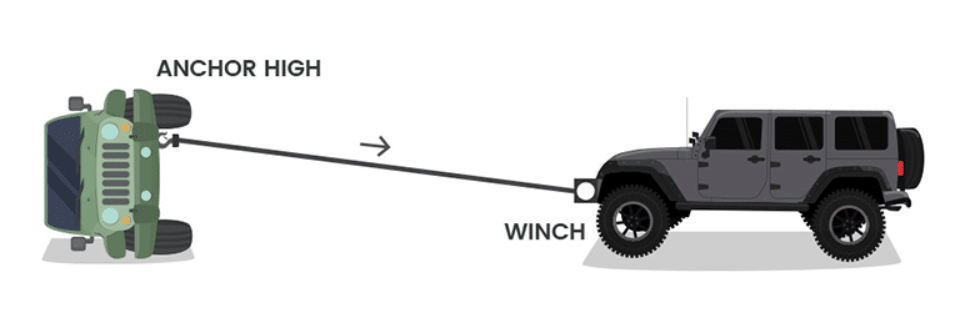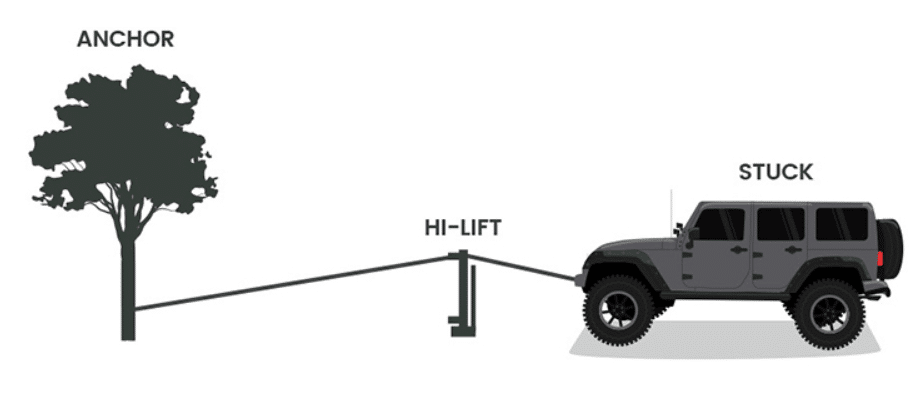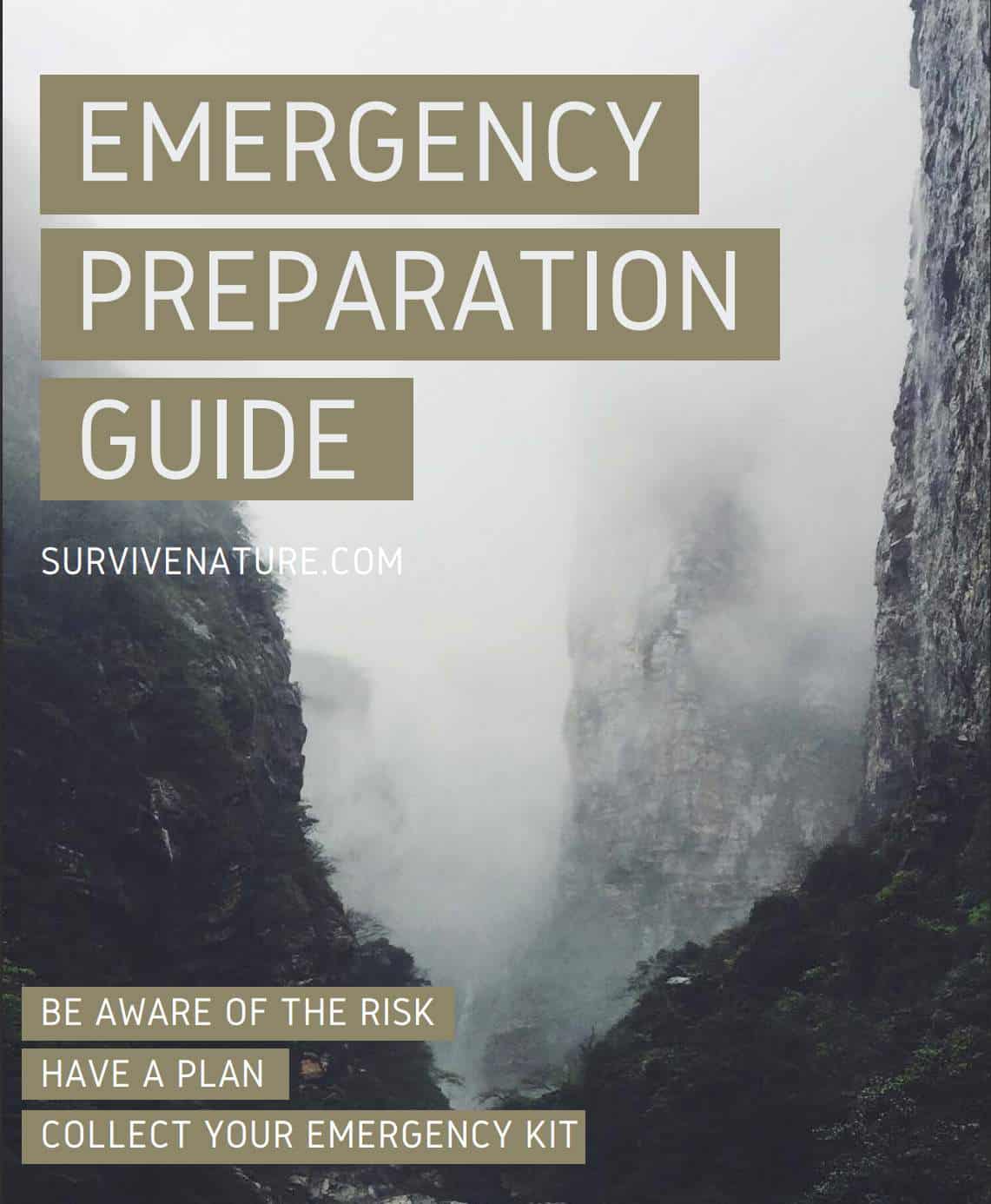Undoubtedly, winching is an indispensable skill and ability that every traveler should be aware of and should be able to perform. Even if you are not a person of jeeping or traveling long-distance, it is essential to know how this principle is working in order to help a person stuck in trouble and to safely leave a precarious situation by yourself.
A winch is a powerful machine that can be used to pull or haul heavy objects. Usually, it has a reel on which one can wind up a wire rope, paracord rope, or chain for hauling a vehicle or another cargo by using leverage.
All in all, winching is a very useful tool that may be found wholesome on numerous occasions. In this article, you will find tips on how to use a winch to pull out the car, what you need to bring with you on long trips to always stay safe, and several ways of recovering a stuck car. So, stay with us to gain a piece of life-saving knowledge!
Why I May Need Using a Winch
As is mentioned, winching is a technique that may be used in various fields and for numerous occasions. However, the most popular way to use it is for rescuing a stuck vehicle. That is why you should consider having a winch kit in your car.
If the car falls sideways or is tucked in a deep pit, you are likely to use a winch to pull it out without causing too much damage. The main principle of work of winching is to attach a tight-fitting, tension of winch line and of pulling of the objects, not to mention the proper shackle and an angle of pulling.
Before you start using it, you should remember some rules of the thumb for a winch:
- use only proper materials and never use a recovery strap for winching;
- keep a safe distance between you and the object you are going to pull
- protect yourself from possible damage by wearing gloves and a face mask if possible; you can also acquire a hook strap to ease the work
- also, consider applying a heavy blanket onto the winch cable to reduce the opportunity to injure yourself in case the rope is damaged
- use a reliable shackle to connect the winch to the vehicle
- consider an approximate weight of the vehicle before you start winching since the wire rope may break when pulling a too-heavy object
- when towing, make sure the anchor point is stable and will not break out
- practice winching before the real occasions happen as in some cases you have no chance to fail the process
These are the main principles of working with winch, yet the essential safety should be reminded of in any case of dealing with heavy objects. Therefore, there is no need to explain that a steel cable is able to harm you and your vehicle if you use the shackle incorrectly.
How to Use a Winch Rope
Now, when you know the proper safety precautions, it is time for us to dip into winching to find out the tips on using a winch in various situations and how to apply the pulling power of a winch properly. Let’s start with winching basics and look at the elements of the manual winch.
Basics
- Brake. It prevents the winch line from paying extra rope when not needed, so it is working as a lock. In electrical winching machines, the break comes into work automatically when the motor turns off.
- Clutch. It is an element that regulates the rolling of the reel of the winch and enables the drum to wrap the rope by using a gear train. Therefore, the line is prevented from free-spooling.
- Drum. The drum itself is a steel reel that starts to rotate when you turn on the motor and wraps the wire rope around the drum in a needed direction.
- Control unit. The additional block to any electric winching machine is made to control the tension, load, and other several different factors from the remote control.
- Fairlead (wire lead). It is a lifesaver of the wire rope as it helps to prevent the line while wrapping and meeting bumper or winch mount.
- Gear train. This element is one of the essentials in electric winches. It connects the motor with the gear system which controls the rope or chain moving. Exactly the gear train turns the electric energy from the motor into the mechanical load.
- Motor. As in any other electric equipment, the motor is the main power source. It gives the motion to the gear system to pull it or wrap it onto the drum. To set up its work, you can connect it to the battery of your vehicle.
- Winch line (winch cable). It is another essential part of the winch which is made from steel or synthetic ropes. The material and size of the winch rope determine how much load it will be able to pull. It also has a loop on its end to which the winch hook can be attached.
- Remote control. The remote control system is included in many electric winches and controls the direction of drum spinning. It also helps you to reduce the risk of accidents by letting you stand a long distance from a towing vehicle.
The general principle of winching is to set a correct anchor point. You need to rig the winch to the vehicle through an anchor that will work as an additional point of sustainability. Any stable object can be used as an anchor, including trees, rocks, or even other cars. Avoid choosing trees with a weird angle as they may fall or will give an additional load to the winching process. Also, think of the weight of the vehicle and compare it to the weight of the anchor before towing.
You can also explore different techniques to rig the winch: single line, double line, and triple line. The single wrap is the most common way to rig the winch.
Snatch Blocking

You can also consider using a snatch block to ease the process and double the power of the winch cables. It works simply by applying the tree trunk protector to the tree that you want to use as an anchor and threading the winch through it. The hook is also applied to the battery of your vehicle. Therefore, when you turn on the electric winch, the car is pulled to the tree by the automatic power of the winch.
You should be able to stop the towing at the right time as otherwise, the vehicle can bump into the tree. So, to safely finish the process, stay away from the location of winching and look after the process.
A snatch block can help you to multiply the power of pulling by splitting the weight of the vehicle across the lines and amount of blocks you use. It also means you can use several anchors. However, first, determine that the first anchor point should be the most stable as it takes the biggest amount of pull and load. However, it is not recommended to use a synthetic rope if you want to double the pulling power as the line may break.
Rollover Recovery

Another method is used for a proper recovery of the rolled-over vehicle. Notice that it does not imply using a recovery strap as it is not considered to be a safe kind of equipment for such solutions. Also, do not do the recovery on the short distances between the recovery object and the towing one. It may cause a serious accident.
So, choose a reliable point on the bottom frame of the recovery vehicle and set a high anchor point. Set the transmission of the rolled-over car to neutral and disengage the lockers. It is obvious that the recovery vehicle may be damaged in some way when it is brought to the right position. Moreover, if the winch continues working after the recovery, it is likely that the vehicle will be brought to the anchor fastly due to the neutral transmission position. Therefore, pay accurate attention to what is happening and control the clutch. That is why you may want to use two winches or hooks at a time.
It is also considered to use ground and rocks as helpful objects during the process of recovery. Since the vehicle is lying on one of its sides, there is no guarantee it will not start pivoting and even fall upside down. So, digging the ground under the wheel may be a good way to force the faster pivot.
Do not hesitate to re-spool the rope under load so it will not let the outer layers of the cable to pull down under the inner layers.
High-Ankle Recovery

This method is applied when the vehicle is stuck in a viscous mud or a very deep hole as it has an anchor point set very high and thus pulls the object not only forwards but also upwards. For these purposes, you may again need a high tree. Pay attention to the reasonable height of the fastening point and its angle since the mud also puts pressure on the armature of the vehicle and may damage it if the height is not enough.
However, using a high-ankle method is considered to be the most dangerous option in any case. That is why I recommend using it only as a last resort when there is no alternative way of leaving the accident.
How to Choose a Winch Rope?
Surely, you want to avoid winching accidents, so you should be concerned not only about the technique of winching but also about the equipment you use. As it was already mentioned, it is better to avoid using synthetic rope when pulling heavy objects. In many cases, a steel cable is the best thing to apply.
Another thing to mention is the RPL (rated line pull) which is assigned to every rope. When choosing a winch to buy, consider the weight of your vehicle to pick the mechanism that will be able to handle your car. Basically, the winch can pull 1.5 times the pulling capacity of the object. Therefore, if the car weighs 6000 pounds, the winch to use should be 9000 pounds.
Also, always remember that if you are stuck in an area near any city, you can always call tow trucks or other services to help you. It is especially a valuable option for those who are not very experienced in using a winch. Nevertheless, having one in your trunk is never a loss!
Frequently Asked Questions — FAQ
What Is Winching?
Winching is a technique that may help you to pull the car or another heavy object from a viscous mud or a deep pit. It uses a motor, rope, hook, and gear system to pull the objects towards the winch point.
Where Do You Stand When Winching?
It is essential to keep a safe distance from the winching object. It is highly important as both the anchor and the vehicle may start moving and harm you. Other important safety rules proclaim that you must use gloves and blankets to protect yourself from sliding off the rope.
What Is a Winch Point?
A winch point is also called a winch point. It is a point on which you apply the main pulling resistance of the winch. Without it, there will be no push applied to the vehicle. You may set the winch point like a tree, high rock, or another heavier vehicle.
When Do I Need a Winch?
There may be several situations in which a winch is a highly needed tool. You should consider it when your car is stuck in the mud, rolled over, or fallen in the pit. The winch will help you to pull the vehicle away without applying your own force and using electricity from your car’s motor.


